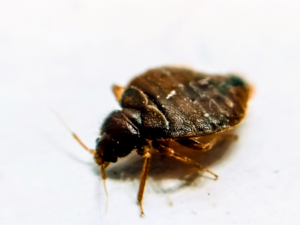Home / Blog / Ants / How to Keep Flying Ants Out of Your Pool
How to Keep Flying Ants Out of Your Pool

Scientifically reviewed by Daniel Baldwin, BCE, CCFS, CP-FS
-Published on November 24, 2024
-Updated on March 19, 2025
Swarms of flying ants can ruin your family’s time by the swimming pool. These insects are attracted to the water in your pool and the light reflecting off of it, and they won’t hesitate to bite. This quick guide will teach you how you can take action to keep flying ants out of your pool and get back to enjoying your backyard oasis.
 ,
,
What are flying ants?
Many types of ants have ‘swarmers’ within their colony when it is time to for mating. Swarmers are male flying ants that have wings and fly during their reproductive season—March to July—which overlaps with the peak of the pool season.
Ants are actually related to wasps, which becomes more obvious when they grow wings. Both belong to the order Hymenoptera, Greek for a membranous wing. While flying ants don’t sting like wasps, they can bite and leave behind red welts.
Many species of ants with wings can become a nuisance around your pool, including red imported fire ants and carpenter ants.
What do flying ants look like?
Winged carpenter ants have dark-colored bodies at least ½-¾ inches long with a narrow waist, elbowed antennae, and two sets of wings, with the back wings shorter than the front wings.
Red-imported fire ants with wings grow to be ⅜ inches long. These pesky insects are reddish brown or black, have a waist with two nodes, antennae with ten segments, and a two-segmented club at the tip.

Do flying ants bite?
Although some flying ants will bite people when they feel threatened, their bites are only dangerous if you are allergic.
What attracts flying ants to swimming pools?
Nearly all insects need water to survive, making the swimming pools in backyards and apartment complexes an attractive area for flying ants. Winged ants are attracted to the light that reflects from the water’s surface of your pool but may also be drawn to the water when searching for a moist nesting site to begin a new colony.
You may be more likely to find flying ants in your pool and elsewhere on your property after it rains. The high humidity combined with rain and the water in your pool attracts reproductive ants to the area where they can breed and grow their colony. If you have grass or a garden near your pool, rainstorms can sometimes wash out ants’ nests and sweep them into your swimming pool.
Flying ants can nest close to a pool’s mechanical parts
Your pool’s mechanical parts have a magnetic field that can attract all kinds of ants. These mechanics will bring flying ants in, further causing harm by chewing your pool’s wires and even using the area for nesting. It’s a good idea to closely monitor this location and check for nests regularly.
How to get rid of flying ants in your pool
Homeowners can help discourage the number of flying ants in a pool by using simple techniques.
Remove plantings
Ants need water. Like most species, ants need water to survive, so it’s best to keep potted plants or other vegetation away from your pool. Moisture can collect into puddles after you water your greenery or pool in the leaves, attracting flying ants, which can eventually lead to an infestation that spills over into your pool area and equipment.
Pool covers
Covering your pool with an anti-reflective cover when not in use will reduce the number of insects attracted to the water, not to mention some animals that may be a nuisance, such as mice, frogs, and snakes.
Pest control
If you’ve taken steps to keep flying ants away from your pool but still experience swarms of insects ruining your pool days, it’s time to contact a professional pest control company. Flying ants may only be present in your yard seasonally, but their arrival typically coincides with the times of the year when you enjoy your swimming pool the most.
A reputable pest control business can locate and remove the flying ants’ nests and help prevent future infestations from invading your property again.
Pest control services
At Hawx Pest Control, we have safe, quality treatment solutions to keep flying ants and other pests away from your home and pool. Our professional technicians have extensive expertise and experience dealing with numerous types of pests that can infest homes in your area, including even the most stubborn infestations of flying ants. Contact us today for a free estimate so you can enjoy a safe and comfortable pool all summer long.
Related Articles
Visit our blog to learn more.
→






